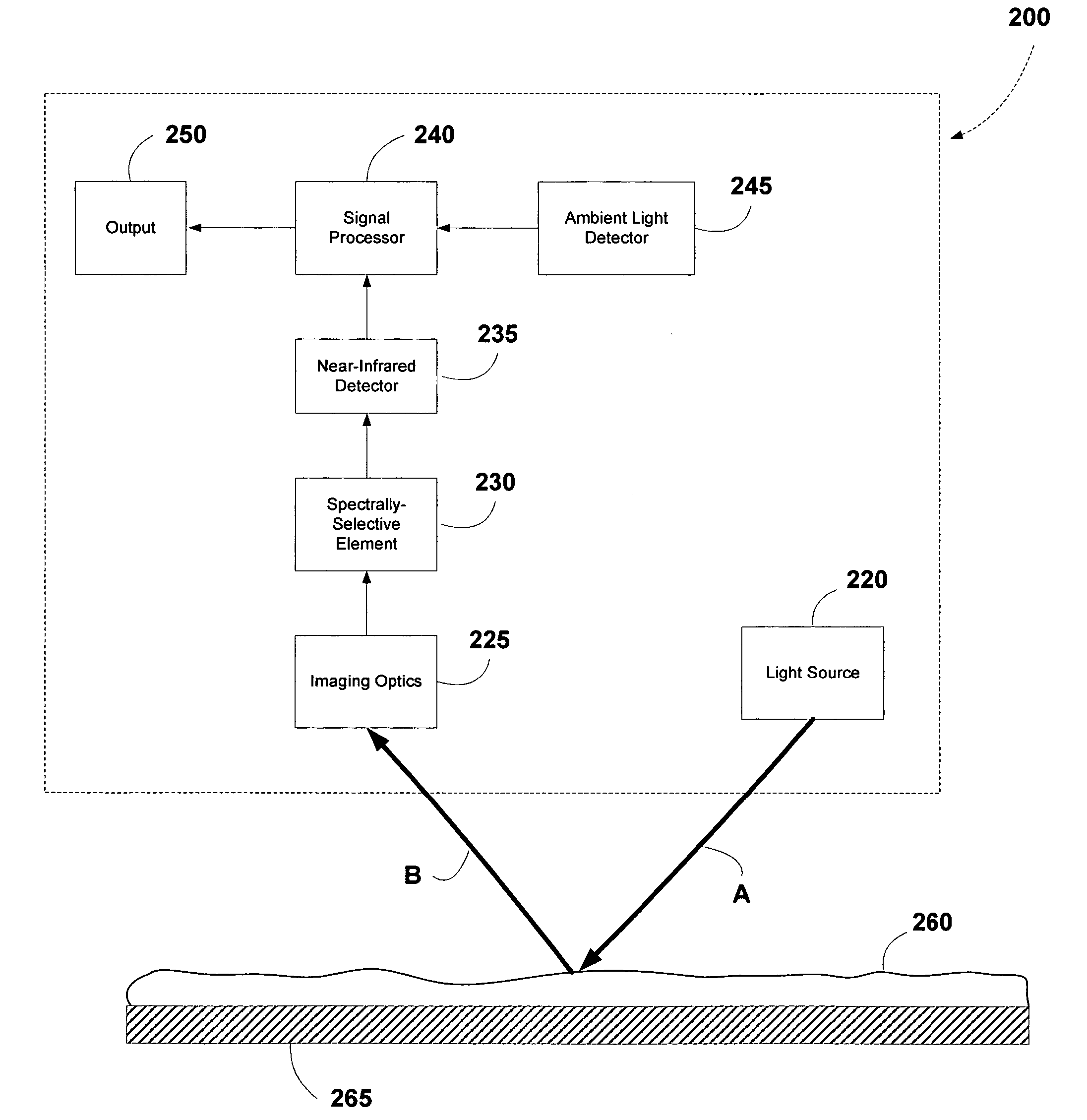Methods for detecting ice and liquid water on surfaces
a technology of liquid water and surface, applied in the direction of optical radiation measurement, instruments, alarms, etc., can solve the problems of air travel safety, risk of losing control, and presence of ice on surfaces, and achieve the effect of being easily calculated
- Summary
- Abstract
- Description
- Claims
- Application Information
AI Technical Summary
Benefits of technology
Problems solved by technology
Method used
Image
Examples
Embodiment Construction
[0016] The present invention relates to methods for detecting the presence of ice or water on surfaces. According to one method of the present invention, a reflectance spectrum from a surface to be tested is measured using any suitable near-infrared optical system. The midpoint wavelength of the reflectance magnitude transition near 1.4 microns is calculated, and compared to a decision threshold wavelength. If the midpoint wavelength is less than the decision threshold wavelength, the presence of liquid water on the surface is indicated. If the midpoint wavelength is greater than the decision threshold wavelength, the presence of ice is indicated on the surface.
[0017] According to another method of the invention, at least three reflectance levels are measured at three wavelengths, and a decision function is applied to the measured reflectance levels. The dimensionless output of the decision function is compared to at least two pre-defined ranges. If the output is within a first ran...
PUM
 Login to View More
Login to View More Abstract
Description
Claims
Application Information
 Login to View More
Login to View More - R&D
- Intellectual Property
- Life Sciences
- Materials
- Tech Scout
- Unparalleled Data Quality
- Higher Quality Content
- 60% Fewer Hallucinations
Browse by: Latest US Patents, China's latest patents, Technical Efficacy Thesaurus, Application Domain, Technology Topic, Popular Technical Reports.
© 2025 PatSnap. All rights reserved.Legal|Privacy policy|Modern Slavery Act Transparency Statement|Sitemap|About US| Contact US: help@patsnap.com



